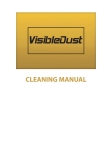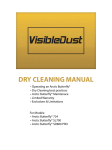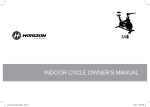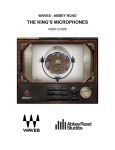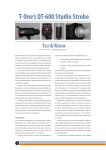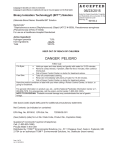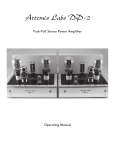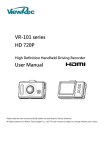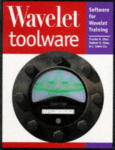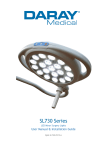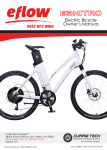Download CLEANING MANUAL
Transcript
CLEANING MANUAL July 27, 2007 Rev 1.0 VisibleDust Congratulations on your purchase of the renowned VisibleDust sensor cleaning technology. This manual is our comprehensive guide to assist you in both wet and dry cleaning techniques. We have prepared a simple, step-by-step process and Frequently Asked Questions section for your convenience. You will also find topics on cleaning theory, how your camera becomes dirty, cleaning with alcohol and other important topics. We want you to be prepared for every challenge, and with the information outlined within this guide, you will be capable of identifying and treating various contaminations. Products this guide covers: • Arctic Butterfly® 724 • Arctic Butterfly® SL700 • Arctic Butterfly® SD800 • Sensor Brush™ • Sensor Loupe™ • VisibleDusts Swabs™ • Sensor Clean™ • VDust™ Plus • Smear Away™ Two particles hugging the fibers of the Sensor Brush™ filaments. WHY CLEAN MY SENSOR? Dust in images just comes included in the package when you became a digital photographer. They’re the variable in the equation that turns a photoshoot into work. A clean sensor can make the difference between a picture, and a great photograph! Cleaning a dirty sensor is considered taboo for many photographers. Although new digital cameras are now coming equipped with anti-dust technology to help ease the pain; like a computer virus, dust still manages to slip by, potentially ruining your images. With VisibleDust‘s cleaning system, you can enjoy the comfort of knowing your sensor is truly clean to the same quality levels as the manufacturer. In our efforts to address the issue of dust, VisibleDust has developed leading, cutting edge technologies that, not only clean and protect your sensor, but extend the intervals of required cleanings. VisibleDust is prepared to educate and guide you as you grow from this new experience. For some, VisibleDust’s products have a spot in your camera bag; others are seeking to find the simple and safe solution. Whatever your reasons are for turning to VisibleDust, you won’t need to look anywhere else. HISTORY OF SENSOR BRUSH™ VISIBLEDUST was founded by Dr. F Dehghan. After accidentally scratching his sensor, Dr. Degan sought to use his expertise and knowledge of biochip technology to develop a safer method for sensor cleaning. The result was Sensor Brush™. Attracting protein and DNA to the glass-like surface of a biochip for attachment requires special preparation of that surface. Because dust has many common characteristics Sensor Brush™ and Arctic Butterfly® 724 with DNA, VisibleDust’s DSLR sensor cleaning products are able to utilize the same technology. Sensor Brush™ was an instant win with photographers everywhere and propelled VisibleDust into the position of the industry leader. VisibleDust’s flagship product Sensor Brush™, has since evolved into the renown Arctic Butterfly® models. Although Sensor Brush™ has gone through many stages to become what it is today, the core components of being safe, effective, and economic are still the heart and soul of the system. The company has since become the major player in the industry for sensor cleaning. Our scientific drive has introduced leading products such as VDust™ Plus, Smear Away™ and our patent pending swab line-up. Our system is considered to be the safest, most economical and most efficient choice on the market for cleaning your sensor. We are proud to put our biochip knowledge to the test by bringing you scientifically proven products. VisibleDust always gives you our best solutions, from our labs to your camera bag. CLEANING THEORY WET & DRY cleaning techniques exist in various products throughout the industry. Ranging from traditional alcohol to VisibleDusts Sensor Brush™. VisibleDusts research and development have resulted in the industry’s only scientifically proven wet and dry cleaning products. The focus of this manual will be to provide you with the technique and knowledge required to clean sensors using both methods. A full detail for cleaning your camera falls into three steps: Inspection, Dry Cleaning and Wet Cleaning. INSPECTION involves checking over the camera to identify what methods will be used and which areas need to be cleaned. VisibleDusts Sensor Loupe™ is a small, portable tool, with built-in LEDs for a quick assessment for various components of the camera. DRY cleaning is generally the most common method used. Dry cleaning involves using no liquids or swabs from VisibleDust. Only VisibleDust’s Sensor Brush™ or Arctic Butterfly® products should be used for dry cleaning. The filaments of both our Sensor Brush™ and Arctic Butterfly® are equipped with SCF technology, enabling them to safely and effectively remove dust and clean your sensor. Contaminations that either the Arctic Butterfly® or Sensor Brush™ will remove include loose and free particles. As seen in the image, the surface of a sensor is home to deep pits and grooves. Since dust can easily attach itself into these crevasses, a physical force is required to “kick” the dust free. Once free, the particles are attracted to the filaments of the Arctic Butterfly® or Sensor Brush™. The objective of dry Micro-grooves and channels from a sensor scratch. cleaning is either, (a) to remove physical particles from the sensor surface, or (b) to remove all potential scratching hazards; preventing them from collecting along a swab edge. Your sensor would now be prepped and ready for a wet cleaning. WET cleaning is for stains, smears and stubborn dust. Without magnification, distinguishing the difference between a stain and speck of dust is difficult. Always dry clean before you wet clean. You wouldn’t want any loose particles to get dragged from one end to the other; potentially scratching your sensor. Stains or smear on the surface of a sensor can be composed with a variety of elements. Air pollution such as smoke, diesel fumes, or pollen can combine with the present dust on the sensor resulting in a stain. Oils and lubricants from within the camera can mix with the dust and then stick to the surface. There are many factors that all contribute to how stains and smears are formed, from humidity to air temperature. The compsition of a stain will vary from water-based to oil-based. VisibleDust has three wet cleaning solutions that target specific types of contaminants within that range. Typically dust will have the appearance of a small spec. Spots or specs that do not move (by either the physical force of the filaments or a swab edge) may be a scratch. If you’re using the f/22 test to spot contaminants; make sure your lens elements on both ends are clean. Not all contaminants appearing in the image may be on the sensor itself. PRECLEANING INSPECTING for contaminants on your sensor is recommended in using two methods and should always be done prior to cleaning. VisibleDusts Sensor Loupe™ is highly recommended for photographers in the field, or for cleaning centers, the f/22 test. SENSOR LOUPE™ is a stand-alone optical inspection device that magnifies the sensor surface Sensor Loupe™ utilizing BriteVue™ XL Technology for viewing. It’s compact, mount free design also allows it to be used for inspecting the chamber, focusing screen, mirror and lens for contaminants. Sensor Loupe™ offers the brightest, most compact and biggest magnification on the market. This tool is perfect to see what you’re up against. Sensor Loupe™ is designed to be very easy to use. Simply activate the BriteVue™ lights and inspect either your sensor, chamber, focusing screen or mirror. Every photographer has their own personal preference to position and distance; you will determine which style suits you best. THE f/22 TEST is recommended for cleaning centers, as it allows for before and after comparison photographs. Set your digital SLR cameras f-stop to 22, and disable automatic focusing. To avoid vignetting, use a 35mm or longer lens. Do not use a wide angle lens. Take a picture of a singular, uniform-lite backdrop. A cloudless sky or white wall work best. Examine the images by zooming in on them with your cameras LCD preview screen. Should you have access to a personal computer with a valid copy of Adobe® Photoshop®, you can load your image and apply the Autolevels adjustment (Image>Adjustments>Autolevels). For cleaning centers and demos, VisibleDust highly recommends the f/22 method for liability purposes. Saving a before cleaning and after cleaning photograph is perfect for comparisons. PRECLEANING should begin with a thorough inspection of the camera, along with taking the f/22 test. Checking over all the components before you clean will yield an abundance of information, giving you a clearer picture of what materials and methods you will need to apply. Be sure to check over the external body, viewfinder, chamber, mirror, focusing screen, lens mount, LCD screen, rear element and outer lens. Identify which areas Dust settled on the singlet can show in the f/22 test. will require a wet or dry cleaning. After a quick assessment you will be ready to take the f/22 test. Before any cleaning is done, take a before shot using the f/22 test. Be sure your lens is clean beforehand. Dust and oil on your lens can show up in the test results, tainting the outcome. DRY DUST is the culprit 90% of the time. When inspecting with Sensor Loupe™, check all four corners, edges and remote locations for dust. When inspecting your f/22 test results, dust will have the appearance of small black specs. Spots typically have halos around them, and sometimes take the appearance of dry dust. Scratches will appear as an A mirror in desperate need of a wet and dry cleaning. immobile line and are immediately noticeable. Loose particles will be removed during a dry cleaning. Remaining spots/stains are classified as stubborn dust and require wet cleaning for removal. PRECLEANING - UNDER THE MICROSCOPE THE FOLLOWING TEST demonstrates how a sensor looks through different stages of cleaning. Both wet and dry techniques were utilized to clean the surface. All images were taken via a f/22 test and applied with an Autolevels adjustment in Photoshop®. Taken before any cleaning was applied. Many of the spots noticeable are fuzzy and out of focus. 90% of the spots are not visible on the sensor. Shot taken after the outer lens was cleaned. A perfect example demonstrating how contaminations on the lens will show in the test results. Shot taken after one pass with an Arctic Butterfly®. Many spots and specs are removed while a select few have appeared. Most plausible cause is bristle contact with the chamber walls. Next shot was taken after a single pass with VDust applied to a green swab. Some small spots have been removed but nothing drastic. Taken after using a second green swab with VDust™. This time 2 passes with one swab were applied. Some new specs are visible. Mainly contaminants that fell off the chamber walls from rubbing. Results from a single pass with Smear Away™. Some of the more stubborn specs have been removed. Shot taken after a dual pass of Smear Away™ on one swab. Some new spots have showed up. Final shot taken after two passes with an Arctic Butterfly®. Even with physical force, the remaining specs have not changed composure since the beginning of the test and are classified as scratches. This test clearly illustrates the behavior and process of cleaning a camera. Throughout the test, spots were removed with one method while rendering new ones as well. It’s not uncommon for a swab to rub contaminants off a dirty chamber wall while cleaning. The composition of the remaining specs has not changed since the beginning of the test; even with the physical contact of an Arctic Butterfly® and swabs. These specs are visible with the naked eye upon examination; however a Sensor Loupe™ inspection shows that there are additional scratches that did not show up in the original f/22 results. Materials Used: • Arctic Butterfly® 724 • Sensor Loupe™ • VDust™ Plus • Smear Away™ • Green 1.6x Ultra MXD-100 Swabs • Magic Cleaner™ • Lens Clean™ DRY CLEANING STEP 1 - REMOVE CAP & SPIN Remove the protective cap of the Arctic Butterfly® model by twisting the cap and pulling it off. Turn the Arctic Butterfly® on and allow it to spin for 5–10 seconds. The bristles should fan out to a flat 180°. 1a 1b STEP 2 - CLEAN SENSOR SURFACE Method A Refer to your camera’s user manual to properly expose the sensor chip. Take caution not to touch the chamber walls while cleaning, entering and exiting. Gently clean across the sensor surface with one uniform pass, allowing dry dust particles to be statically attracted to the bristles. 2.1a 2.1b Method B Small specks and spots of dry dust require only a light dabbing procedure. Instead of cleaning end-to-end, lightly tap the bristles on dust specks to remove them. 2.2a 2.2b STEP 3 - CHARGE & DISLODGE Charge the bristles and dislodge any dry dust particles from the Arctic Butterfly® by turning it on OUTSIDE AND AWAY FROM the camera. Check your sensor for dust particles with Sensor Loupe™ (sold separately) and repeat steps 1–3 if needed. Spin the Arctic Butterfly® (Charge & Dislodge) outside and away from the camera after EACH brush stroke. DRY CLEANING BEST PRACTICES The Arctic Butterfly® is a tool for safely removing dust particles from the sensor’s surface. Some cameras contain oily chambers or sensor chip perimeters; avoid contact with your chamber while cleaning your sensor. Contaminants on the brush head could affect performance. For stains, smears, smudges, camera oils and lubricants, look to VisibleDust’s travel safe wet cleaning solutions. DO: • Not activate the Arctic Butterfly® while cleaning the sensor (Figure 14.a). • Not apply excessive pressure while cleaning (Figure 14.b). • Not contaminate the bristles with oils, liquids or your fingers. • Not clean with a contaminated brush head. • Not activate the Arctic Butterfly® while the protective cap is still attached. ALWAYS: • stow the Arctic Butterfly® in its case with the cap on when not in use. • remove the batteries when traveling on an airplane. • clean your brush head after every 10–15 uses or as needed. • activate the Arctic Butterfly® in between cleaning strokes, outside the camera. 14.a 14.b ARCTIC BUTTERFLY® MAINTENANCE Cleaning You should clean your Arctic Butterfly® brush head and cap after every 10–15 uses or as soon as any contamination occurs. Should your brush head bristles fray or bend out of shape, you may dip the brush head in warm water (50°C or 122°F) for 10 seconds to straighten the bristles. Do not use hot or boiling water to clean the brush head, as this will permanently damage the bristles. Do not touch the bristles with your fingers. Contamination from oils or liquids will hinder the performance of the Arctic Butterfly®. Should your brush head become contaminated, VisibleDust’s Sensor Brush Wash™ (sold separately) can clean the fibers of any impurities. In the absence of Sensor Brush Wash™, pure isopropyl alcohol (99%) is also an acceptable solvent. Do not use methanol! Switching Brush Heads Only the Arctic Butterfly® models 724 and SD800 Pro have detachable brush heads that are interchangeable. To remove those brush heads, pull them off at the white adapter base. You can then attach either the HDF brush head or the SD800 Pro adapter to mount the 1.6x, 1.3x, 1.0x or the new Angle 45 brush. To prevent loud vibrations, wobbling or reduced spin speed, be sure to firmly attach the adapter/brush head. B A Pull at the white base Firmly attach brush head WET CLEANING SWABS VISIBLEDUSTS cleaning swabs have been engineered into two product categories. The Ultra MXD-100 (Green) series and the DHAP Fabric (Orange) series. Both swabs have been designed for different purposes and could cause problems if used incorrectly. Both series share the same, patent-pending, holes and mini-channels. This design prevents liquid from collecting at one side of the swab essentially eliminating pooling and streaks. This also allows for even saturation on both sides of the swab. VisibleDust’s swabs also utilize a patent-pending folding process. Our swabs are folded on the point of contact and hot sealed along the sides. This insures that there is always a soft edge on the sensor. VisibleDust’s swabs are the available for all sensor chip sizes; from 1.6x (16mm) to medium format (40mm). GREEN SWABS are compatible with ALL of VisibleDust’s sensor cleaning products. When in doubt, use the green. The tight fabric limits the solution from dispensing onto the sensor. The Green series are not compatible with any other solutions. ORANGE SWABS are compatible with isopropyl (99%) cleaning solution and VDust™ Plus. The fabric is very soft and is subject to shedding easier than the Green series. More liquid is dispensed onto the sensor because the fabric is not as dense. CHAMBER CLEAN™ SWABS are compatible with Chamber Clean™ only. Do not use either the Green or Orange series swabs with Chamber Clean™. WET CLEANING STEP 1 - APPLY SOLUTION TO SWAB Remove a swab from its clean room bag carefully. Apply cleaning solution to the appropriate swab until semi-wet. Should your swab dry out, add more solution. Amount of solution varies for swab sizes. Please review the Wet Cleaning Guide (Page 21) if you are unclear which liquids and swabs are compatible. Try not to let the swab touch the adhesive while removing it from the clean bag. Should your swab dry out then apply more solution. It is not uncommon for a swab to occasionally rub contaminants off the chamber sides while cleaning. Should any new dust spots become visible, use an Arctic Butterfly® for dust removal. STEP 2 - CLEAN SENSOR SURFACE Refer to your cameras user manual to properly expose the sensor chip. Take caution not to touch the chamber walls while entering or exiting. Gently clean across the sensor surface with one uniform pass. A B Both sides of the swab may be used to clean. Use each side of the swab only once during cleaning. Cleaning with a contaminated swab edge can potentially harm the sensor. You may be required to add additional cleaning solution to the opposite side. It is not uncommon for a swab to occasionally rub contaminants off the chamber sides while cleaning. Should any new dust spots become visible, use an Arctic Butterfly® for dust removal. STEP 3 - DISCARD SWAB & INSPECT Swabs should be discarded after use. Check your sensor for smears or stains with Sensor Loupe™ and repeat steps 1–3 if needed. For a complete cleaning, follow up with an Arctic Butterfly® to remove any dry contaminants that may be present. Check the sensor surface with Sensor Loupe™ for any remaining contaminations. SPECIALITY SWABS VisibleDust is committed to providing the right tools for any situation. Our speciality swabs are designed for scenarios where our regular swabs are not suitable. Simply apply the proper amount of solution to the swab and clean the designated area. Corner Swabs A Corner Swabs B Apply one drop of solution Gently clean your corners, edges or rub off a remote contaminate. Focusing Screen Swabs A Focusing Screen Swabs B Apply 1-2 drops of Sensor Clean™ Gently clean the focusing screen in one uniform pass. To avoid damage to your focusing screen, clean only with Sensor Clean™. Do not use any alcohol/methanol based products to clean your focusing screen. WET CLEANING BEST PRACTICES VisibleDusts Wet Cleaning solutions are each tailored to remove different traces of contaminations. VisibleDust strongly recommends you dry clean with an Arctic Butterfly® or Sensor Brush™ first to safely remove hard, dry dust particles. See Cleaning Theory for more details. DO: • Not clean with a contaminated swab • Not apply solutions to incompatible swabs • Not apply an excessive amount of solution to the swab • Not recycle a swab once you’ve finished cleaning with it • Not allow a swab to dry out. • Not apply an excessive amount of pressure when cleaning ALWAYS: • use the appropriate swab with its matching solution • store solutions with their cap on when not in use • use the proper sensor size specific swab to clean STREAKS & SMEARS When wet cleaning it is important to use the appropriate swab or streaks/residue may be left behind. Generally, the contaminations on your sensor range from water to oil based. The chart below helps you visualize each product’s capabilities for removing contaminates. Oil Smear Away™ Anti-Static Coating Good for removing strong contamination build-up. Designed to remove heavy oils, stains, lubricants and smears. VDust™ Plus Anti-Static Coating A good mid-range product if you’re not sure what is on your sensor. Start out with VDust™ Plus and see whether you need a stronger or lighter remover. Sensor Clean™ Water Anti-Static Coating A light removal solution. Excellent for water-based contaminations such as condensation, saliva, or streaks. Orange DHAP Series Swabs Compatible Green Ultra MXD-100 Swabs Compatible CLEANING WITH ALCOHOL VisibleDust recognizes that the current market is flooded with alcohol cleaning solutions. To cater to this market, we’ve developed our Orange DHAP swabs. Simply follow our 3-step instructions, using a medical grade isopropyl (90% +) product of your choice. Do not use any methanol products on your sensor. Alcohol cleans through rapid dehydration and evaporation. However, the extremely dry surface is prone to scratching easier and attracting dust. Alcohol also lacks the ability to dissolve protein based contaminations. Methanol and alcohol based solutions are restricted for airplane travel. Generally water-based solutions are recommended for anti-static and anti-fogging coatings. Alcohol-based is for oil removal. FREQUENTLY ASKED QUESTIONS - DRY Q: How safe is the Arctic Butterfly® on my sensor? A: Very safe. The brush head fibers are soft enough not to scratch the sensor and will not dissipate their positive charge onto the sensor. When used incorrectly or for purposes other than the original intent, damage may occur. Q: How does the Arctic Butterfly® clean my sensor? A: The permanently charged fibers attract dry dust particles that come near them. Q: How do an Arctic Butterfly® and Nylon brush differ? A: VisibleDust incorporates SCF (Super-Charged Fiber) technology to attract dry dust. Our bristles undergo a patent pending procedure to become ionized and permanently charged. Nylon brushes are not suitable for removing dust and therefore not recommended. Only VisibleDusts patented Sensor Brush™ technology is qualified to remove dry dust through enhanced SCF electric attraction. Q: Is the Arctic Butterfly® all I need to clean my sensor? A: 95% of the time you will require an Arctic Butterfly® for removing dry dust. Minor stains, smears and oils require wet cleaning to be removed. Look to VisibleDusts travel safe, wet cleaning solutions for stubborn dust, stains, smears and oils. Q: How do I clean my brush head if it becomes contaminated? A: Please review the Maintenance section of this manual for proper information. Q: How many cleanings is the Arctic Butterfly® good for? A: The Arctic Butterfly® is good for up to 10, 000 cleanings and based on the average cost, that is less than 1¢ per cleaning. Q: Should the Arctic Butterfly® vibrate or buzz while activated? A: Small vibrations are acceptable; however, if you’re experiencing loud buzzing or if the brush head is wobbling, the cause may be a loose brush head rubbing against the casing. Attach the brush head firmly enough for the wobbling or vibrations to stop. FREQUENTLY ASKED QUESTIONS - WET Q: How safe are VisibleDusts liquid solutions on my sensor? A: Very safe. Our solutions should only be used AFTER you’ve dry cleaned your sensor with an Arctic Butterfly®. Do not apply any solutions directly on to the sensor! Q: How travel friendly are your liquid solutions? A: Unlike alcohol and methanol based solutions, VisibleDust products are safe. This makes them ideal for travelling on an 1airplane. Q: How do the Green and Orange swabs differ? A: The difference between our MXD-100 (Green) and DHAP (Orange) swabs is the type of fabric used in assembly. The Green swabs are compatible with all of our sensor cleaning solutions, so when in doubt purchase and use the green. If you prefer to clean with isopropyl alcohol (90% +), then purchase the Orange swabs. Orange swabs also work best with VDust™ Plus. Q: Do your water-based solutions evaporate fast? A: Yes! When used in conjunction with the appropriate swabs, you won’t need to wait long. Q: Can I use your solutions to clean other surfaces? A: Yes; however, each of our products is tailored for different scenarios and VisibleDust recommends using each product for its original intent. Q: Can I use just Smear Away™ for all my wet cleaning? A: No. Smear Away™ is designed with powerful cleaning agents and should be used for severe stains or smears. Q: Do your liquids leave any streaks? A: If too much liquid, or the inappropriate swab is used, then streaks may occur. Some airports may restrict carry-on liquids 1 CONTACT This manual is a work in progress and none of the information presented here represents the final version. For more information please contact VisibleDust. Matt Tycholaz Marketing Coordinator [email protected] 780.455.1082 www.visibledust.com Trevor Reisz [email protected] 312.944.2774 ext 2276 www.calumet.com

























